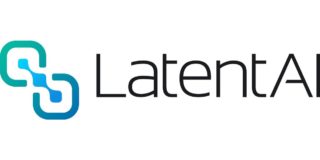Reading Time: 11 minutes
“Project managers function as bandleaders who pull together their players, each a specialist with individual score and internal rhythm. Under the leader’s direction, they all respond to the same beat,” says L.R. Sayles, retired professor of managerial behavior at Columbia University.
As potent and versatile project managers need to be, they also need to have potent and versatile project management techniques up their sleeves.
Project management technique, in simple words, is a specified, tried-and-tested methodology to start, manage, and complete a project.
In this blog, I have listed the 10 most widely used project management techniques. Read on to find out which one works best for you and your team.
10 Best Project Management Techniques
Here are the 10 best project management methodologies that are widely used to administer projects efficiently:
1. PMI or PMBOK
Type of project management methodology: Traditional
Origin: Founded in 1969, project management became a discipline in the construction, aerospace, and defense industries. In 1969, Gordon Davis of the Georgia Institute of Technology, and Jim Snyder, of Smith, Kline & French Laboratories felt the need for an organization that provided project managers a platform to exchange information and experience. This is how PMI was founded by 5 people in Georgia, Atlanta.
What is it?
PMI or The Project Management Institute (PMI) is a non-profit project management organization founded in the 1960s in the States. The layout guidelines, rules, and characteristics for project management and the program portfolio management. They also offer project management certifications.
Project Management Body of Knowledge or PMBOK is a book by PMI published in 1996 with all project management information compiled and articulated in it. Its latest 6th edition was launched in 2017.
The book itemizes a project into 5 segments of processes: initiating, planning, executing, controlling, and closing. Despite the debate of PMBOK being a methodology or a structure of projects, the clear thing here is PMBOK is an efficient project management technique. PMBOK is a classic traditional framework that project managers can use.

Ideal for?
- You can use the PMBOK technique for any size projects since any project will go through the 5 stages as mentioned in the PMBOK book.
- It is a good project management technique to have everyone on board sharing the same vision for the project.
2. Waterfall Method – Gantt Chart
Type of project management methodology: Traditional
Origin: In an article published in 1970, Winston W. Royce, an American computer scientist, first formally described this project management technique. However, then — the term “Waterfall technique” was not used. The term was first mentioned in a paper by T.E. Bell and T.A. Turner in 1976.
What is it?
The waterfall method, as the name suggests, is the trickling down of responsibilities into finer aspects. The most commonly preferred technique for the Waterfall model is the Gantt chart. Gantt chart is both a project management tool and technique that helps visualize tasks, subtasks, and scheduling priorities. It allows planning projects in sprints and milestones across the project management life cycle.
It helps you manage multiple tasks from one place and shows you a real-time comparison of planned versus actual timelines in a project. If you want to learn how to create an effective Gantt Chart in M.S. Excel, this will help:
https://www.youtube.com/watch?v=un8j6QqpYa0
There are also several free online Gantt chart software available to help you make detailed Gantt charts with drag-and-drop ease.

If you want to download the template shown above, click here for Excel Sheet and here for Google Sheet format.
Visual Representation:

Ideal For:
- Large-scale complex projects across any industry follow a rigid structure wherein changes aren’t expected midway due to costs and practicality Example: Construction and manufacturing process
- Any small and medium scale projects where midway pivoting and changes are not expected
- Simple software development projects
- Projects that have a strict work environment
3. Scrum Framework
Type of project management methodology: Agile
Origin: Scrum officially is a subset of the term “Agile” now — yet, this project management technique was first called by this name by Hirotaka Takeuchi and Ikujiro Nonaka, Harvard professors of management studies in 1986, in their paper The New Product Development Game.
What is it?
Please note that Scrum is not a methodology. It is a framework for applying the methodology of agile into practice.
Scrum is an evolved modern-day, agile framework. It replaces linear waterfall projects that use programmed algorithmic methods with heuristic-based, empirical scientific methods. Scrum is one of the best frameworks that empower team members by allowing self-organization during times of unpredictability in a project. It also allows teams to work in Sprints. Sprints are fixed-length intervals of time that include sprint planning stage, sprint review, and regular stand-up meeting.
The scrum framework has three defined roles:

- Product Owner: The person who defines goals and objectives and allocates tasks.
- Scrum Master: The person who sees if everything is working within the Scrum framework rules.
- Development Team: The people who execute the project.
Talking about development teams:
The Scrum teams are usually small. It is not bigger than 5 to 9 people, with seven being the ideal. In case the teams are positioned in different physical locations, then each location ought to have one scrum team.
Visual Representation:

Ideal for?
- Scrum is ideal for software development teams.
- But its components are used across industries like retail, logistics, event planning, or any project that requires some flexible structure.
- Use the scrum framework when the requirements are not clear initially, and the probability of changes in ongoing projects is high.
4. Kanban
Type of project management methodology: Agile
Origin: Toyota first used the Kanban approach in the late 1940s to control the production rate of its vehicles by using the rate of demand. The Japanese automobile company applied it to their main plant machine shop in 1953.

What is it?
The literal translation of the word “Kanban” means billboard in Japanese. And rightly so, because Kanban takes a visual approach to collaborative project management.
Kanban displays work items on a Kanban board for everyone to track workflow and progress from one place. The work items flow from one development stage to another. In Kanban boards, you can rename the stages and increase or decrease their numbers according to your current project requirement.
Its user interface limits the “Work in Progress” phase and pushes people to move from “Doing” to “Done” status. This is because every time you add a task to the “done” list, it triggers your internal reward system, which releases dopamine. This feel-good chemical motivates you to add more tasks to your “done” list.
To check this out for yourself, start your day with a checklist. Mark the tasks done as you go about finishing them. You will see that at the end of the day. You will be multiple times more productive than you would otherwise be. Use Google Keep to try this.
Here is a sample Kanban board:

Unlike most project management tools and techniques in the Kanban approach, there is no dedicated timeline or deadline. It is up to you to decide if this is an advantage or a disadvantage.
You might be wondering, how does this translate into the software?
Visual planning boards have gone obsolete in the software era like ours. But the Kanban method has not. Now there are new uses for Kanban tools and Kanban methods. Agile teams use the Kanban approach in project management tools for backlog planning in software development, story-boarding user stories, etc.
Here is a Kanban board in a project management software:

Ideal for?
- Initially developed for manufacturing and software teams, the Kanban is now used across industries like organizational strategy, executive process, human resources, marketing,
- and accounts receivable and payable.
- Almost any collaborative team with a heavy inflow of incoming requests with varying sizes and priorities can use the Kanban approach.
5. Event chain methodology (ECM)
Type of project management methodology: Change Management
Origin: Lev Virine first proposed the Event chain methodology from 2002 to 2004. In the proceedings of the 2013 Enterprise Risk Management Symposium, April 22–24, in Chicago. Lev Virine is a software developer, structural engineering, and project manager.
What is it?
The goal of ECM is to track, predict and manage events that have an impact on the project schedule. It’s an advanced form of the critical path method and critical chain project management and helps with more accurate estimating and scheduling plans.
This project management technique aims to keep motivational and cognitive biases in check while estimating and scheduling a project. This improves the accuracy of risk assessment and, therefore, generates more realistic risk-adjusted project schedules. It is known as a type of change methodology because it is highly adaptable to external and internal situations
The event chain methodology is based on 6 main principles here they are:
- Moment of Risk and Status– During a project, external events will affect the project negatively or positively.
- The Chain of Events – a delay in one part of the project will cause delays in other parts of the project.
- The Monte Carlo Simulation – a statistical technique that calculates probabilities of risks during a project.
- Critical Event Strings – event chains that will have a maximum impact on the project. Project managers need to identify these critical event strings to mitigate their potential negative impact.
- Performance tracking with Event Chains – project managers need to use the Monte Carlo simulation data and keep the metrics of actual performance updated.
- Event Chain Diagrams – helps visualize risks by showing relationships between events and tasks and the impact on each other.

Ideal for?
- Projects with great uncertainty throughout the project life cycle.
- Projects when accurate risk analysis of all factors need to be accurately measured
6. Extreme Project Management
Type of project management methodology: Change Methodology
Origin: Extreme Project Management (XPM), as a concept, originated in 2004 in the book Extreme Project Management by Douglass DeCarlo. You can find the book here
What is it?
The extreme project management method allows altering the project plan, budgets, and outcome to fit the changing needs at any stage of the project.
In other words, it offers a people-driven approach instead of the process-driven, meaning that in XPM, people adapt models to fit the project, not otherwise. XPM is, in a way, a response to the rigidity of traditional project management. It is of short duration and open to flexibility, so plans, budgets, and more can change anytime in the project.
This project management technique helps manage the unknown factors in your project, installs confidence in your stakeholders, and is a holistic approach to project management, based on facts and using experts to get the job done.

Ideal for?
- Projects that have an emphasis on short-term
- Projects that are only a few weeks or even days long
- Projects where the focus is on the results and not process
7. Program Evaluation and Review Technique (PERT)
Type of project management technique: Agile
Origin: The U.S. Navy Special Projects Office first established the PERT project management technique in 1957 to help the U.S. Navy plan and control its Polaris missile program.
What is it?
PERT is an acronym for Program Evaluation and Review Technique. This project management technique primarily helps with time and budget estimates. This project management technique calculates and manages probabilities by using many statistical methods.
PERT breaks down tasks into detailed activities and then adds these to a Gantt chart to identify those dependent on one another. With these insights, an illustrative map known as the PERT chart is created of the network of activities and their interdependencies. You can see it below. On the PERT chart, nodes represent the events, and activities are represented by arrows drawn from one node (event) to another based.
All these arrows also have the time duration mentioned with them. The earliest time (T.E.) and the latest time (T.L.) for every activity are written out, along with the slack time for each activity.

Ideal for?
- Large projects with complex requirements
- Complex projects with a hu number of non-routine tasks
8. Critical Path Method
Type of project management technique: Traditional
Origins: DuPont Company was the largest chemical company in history in terms of sales. It established the Critical Path Method in 1957.
The project management techniques founders were two mathematicians who wanted to do away with additional schedule-related costs of shutting down and firing up chemical plants. They created this technique to schedule tasks effectively.
What is it?
This CPM project management technique is a scheduling algorithm. It is primarily used to identify the longest sequence of critical tasks in a project. These tasks are crucial to identify to mitigate risks and meet deadlines.
Here’s how it works:
- First, identify and categorize all the project tasks according to their importance
- Second, now you define the expected time each task would require
- Find out the interdependencies between the tasks.
- Determine the type of dependencies between tasks:
- Task 1 and Task 2 need to be done simultaneously
- Task 2 can be done after finishing Task 1
- To begin working on Task 2, you need to start working on Task 1 first.
- Finish Task 1 to start and finish Task 2

Ideal for?
- Projects with rigid deadlines and timelines (e.g., software development or construction projects)
- Projects with several interdependent tasks
- Projects with repetitive tasks
9. PRINCE2
Type of project management technique: Traditional
Origin: In 1989, the U.K. government adopted PROMPT II variation as a standard for project management in the I.T. sector. PROMPT II is the earlier variation of PRINCE 2. PRINCE2 originated in 1996 as a generic project management method. As of today, it is the official project management technique for all U.K. government projects.
What is it?
PRINCE2 stands for Projects IN Controlled Environments. It is a structured certified methodology.
Created by the U.K. government for software projects, this project management technique is not like other traditional methods like Waterfall as it is not a one-size-fits-all solution.
It follows 7 principles and themes.
The 7 themes are:
- Business Case: to see if the project is worthwhile and achievable
- Organization: definite roles and responsibilities
- Quality: defining the desired quality of end product
- Plans: how to achieve targets.
- Risk: predict and avoid risks
- Change: change requests amidst projects
- Progress: tracking vitals of the project
The 7 principles are:
- Continued Business Justification — Regular updating of the business case to ensure the usability of the project.
- Learning from experience — Every project has a lesson log that one can refer to avoid remaking already established workflows again.
- Defining roles and responsibilities — to assign roles and responsibilities to all team members
Roles are divided into 4 different levels:
- The corporate management/program management level
- The project board level
- The project manager level
- The team level
- Managing by stages — Each stage of project development is managed differently by updating the business case, risk factors, and project plan.
- Managing by exception — When specific details such as the project scope or budget changes, the question on how to continue the proves goes to a higher management level.
- Product focus — Extensive focus is placed on the quality of the result of the project.
- Customizing to suit the project environment — This point is to customize the complexity, risk estimation, size, and importance of the developing project.

Ideal for?
- Adopted by many governments, PRINCE2 is not a preferred choice for smaller projects.
10. Rational Unified Process (RUP)
Type of project management techniques: Agile
Origin: The Rational Software Corporation in 2003 established The Rational Unified Process.
What is it?
RUP or The Rational Unified Process is an agile management structure extensively used for software development.
This project development techniques 4 different stages:
- Inception – To decide if the project is worthwhile and doable.
- Elaboration – To focus on possible applications of the software and costs aspects during the development.
- Construction – The stage where the project is developed and tested.
- Transition – Adjustments or updates are made in the software based on inputs from end-users.
Each of the 4 phases mentioned above has the main objective and involves the following 6 development disciplines:
- Business Modeling
- Requirements
- Analysis & Design
- Implementation
- Testing
- Deployment
Note that if you successfully do not reach the first stage’s main objective, you will not be able to move on to the second stage.

Ideal for?
- All sizes of software development projects
- The software development projects should have a predictable deadline and budget.
Conclusion
We hope this list of project management tools and techniques will help you find the right project management techniques for you.
Now that you have chosen the right project management techniques for you and your team, it is time to find the right project management tool to implement in your daily operations.
SoftwareSuggest itemizes the best project management tools based on user ratings, features, and ease of use. Check out the unbiased list here.
Need Any Technology Assistance? Call Pursho @ 0731-6725516




